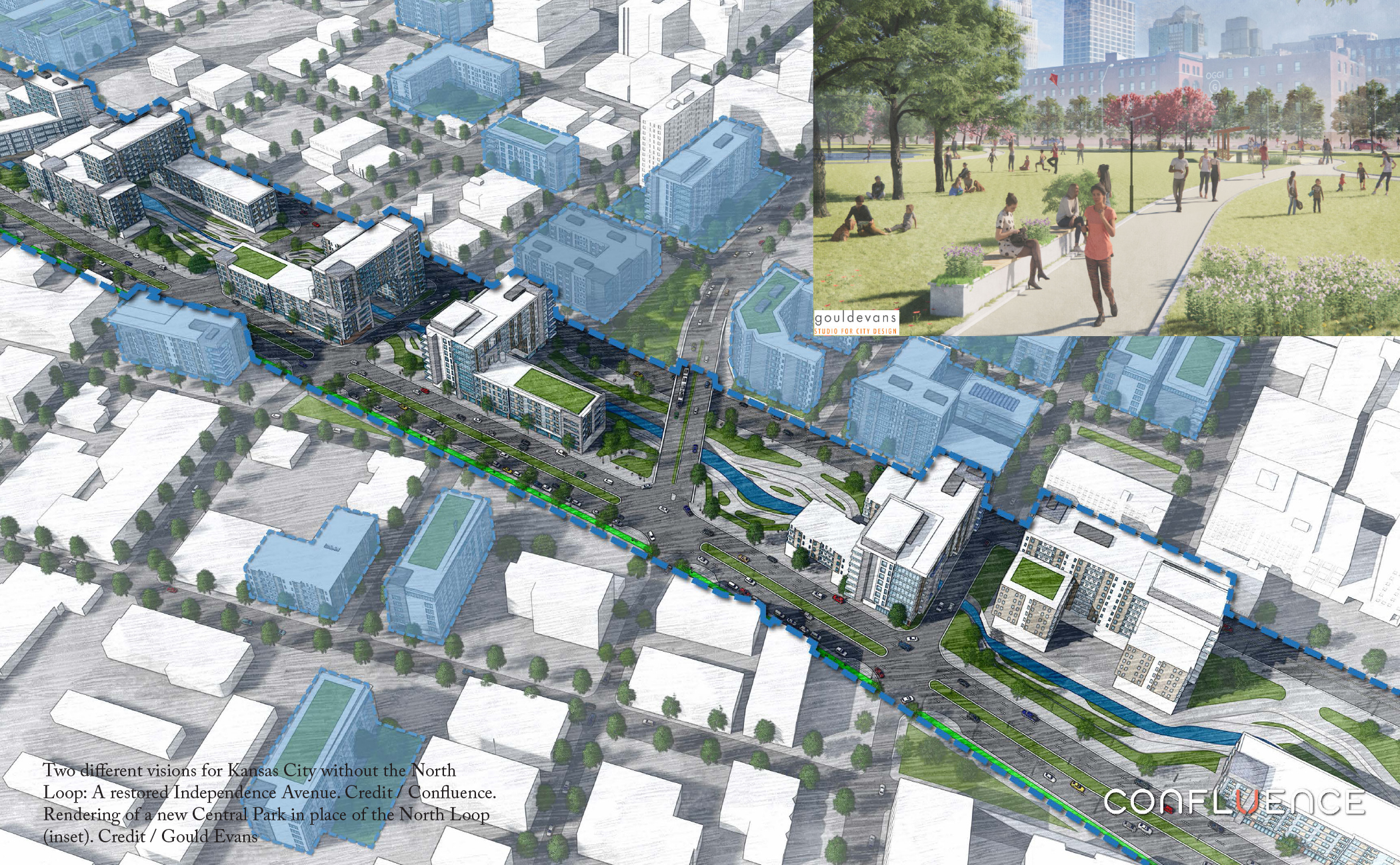History and Context
In Kansas City, there’s a plan to disentangle the northern part of downtown from the highways like the North Loop that envelope it and reincorporate it back into the rest of the city. Beyond the Loop offers a chance to play the long game and provides a step-by-step blueprint to prepare the city to reap the overwhelming social, environmental, and economic benefits from the North Loop’s removal.
Many of Kansas City’s neighborhoods are effectively islands, divided by seas of asphalt and concrete. Nowhere is this more true than Kansas City’s Central Business District, which is penned in on all four sides by Interstate highways. The north side of this loop is particularly invasive, a tangle of ramps, interchanges, and highways that separate three neighborhoods: the Central Business District, River Market, and Columbus Park, from each other. Prior to the highways, Independence Avenue seamlessly linked all three neighborhoods.
Traffic studies undertaken as part of the Buck O’Neil Bridge rebuilding suggest that the removal of the North Loop, the redesign of Route 9 as a city street, and the reconnection of Independence Avenue between Columbus Park and River Market were all feasible without noticeably increasing travel times. This raises a significant question: if expensive highway infrastructure wasn’t necessary to serve Kansas City’s transportation needs, what else could be built in its place?
Proposal
Beyond the Loop, a collaboration between the Mid-America Regional Council, the City of Kansas City, and the Missouri Department of Transportation (MoDOT), proposes several visions for the north side of downtown without the highway. It explores a range of options, from keeping the current highway to shrinking its footprint to removal and replacement with a restored Independence Avenue. Unsurprisingly, the removal option scored highest among all options in the categories of physical conditions, improved transportation choices, and improved economic vitality and placemaking, while only causing a slight increase in traffic.

Beyond the Loop also recommends other parallel projects that would go hand-in-hand with a North Loop removal and amplify its effects. Key among them is the removal of the elevated Route 9 and its replacement with an at-grade street. Once the Buck O’Neil Bridge is replaced, MoDOT projects Route 9 will only carry around 12,000 cars per day, which is less traffic than MoDOT estimates for many of downtown’s existing two lane streets. Rebuilding Route 9 as a street without highway-like qualities will not only restore connections between River Market and Columbus Park, but also remove the oversized cloverleaf interchange that connects it to the North Loop. Roughly five city blocks could be created from the land the interchange now occupies, an opportunity for incremental improvement before a possible North Loop removal.
An Urban Land Institute panel on the North Loop removal indicates that market conditions would be prime starting in 2028, so Kansas City should begin planning now. One high priority should be to establish strategies to combat displacement once investments are made. Kansas City already has an incentive program for formerly redlined neighborhoods that offers a 10-year tax abatement when owners spend at least $5,000 per unit on renovations. The city can build on this program and develop an exterior grant program for those who can’t afford to make improvements, as well as create large-scale incentives for affordable rental housing built on the highway’s right-of-way. That way the City and its residents will be ready for when it becomes time to transform the North Loop.


















